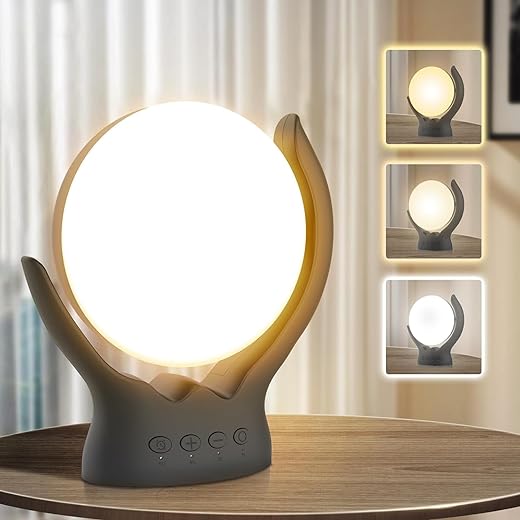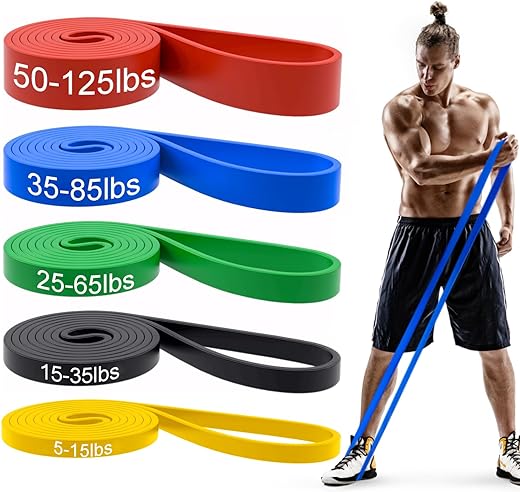This step-by-step guide on how to determine the effectiveness of a sunlight lamp for light therapy will walk you through assessing the benefits of your device for mental health and well-being. By following these instructions, you’ll be empowered to gauge the impact of your sunlight lamp on your mood and productivity, ensuring that you get the most out of your light therapy experience.
Illuminate Your Way to Better Health
Check the Light Spectrum
Choose a sunlight lamp specifically designed for light therapy treatments. Look for lamps labeled as “full-spectrum” or “daylight” to ensure they emit natural light that mimics the sun’s spectrum. To ensure your lamp provides the necessary wavelengths for light therapy, examine the product specifications or inquire with the manufacturer directly. Check the light wavelengths the lamp emits and verify that it covers the blue light spectrum, as blue light is crucial for regulating circadian rhythms and boosting mood.
Position your sunlight lamp at an optimal distance from your body. For effective light therapy, it’s essential to place the lamp within the recommended range typically mentioned in the user manual or product guidelines. Ensure the lamp’s light source is facing you directly, usually at an angle to allow the light to enter your eyes without glaring directly. Spend the recommended amount of time under the lamp’s light, usually ranging from 20 to 45 minutes, depending on the intensity and distance of the lamp. Remember consistency is key when using light therapy for improved mood and well-being.
Evaluate Lux Levels
Measure Lux Levels
Assess the lux levels emitted by your sunlight lamp to guarantee they align with the optimal range for maximum benefit from light therapy. Begin by positioning a lux meter directly beneath the lamp at the same distance you’ll be sitting during therapy. Turn on the lamp, allowing it to reach full brightness for an accurate reading.
Take a lux measurement by reading the lux meter display in lux units. Ensure the lux reading falls between 2,500 to 10,000 lux, as recommended for effective light therapy. If the lux levels are lower than 2,500, consider adjusting the lamp’s position for increased intensity. Conversely, if lux levels exceed 10,000, increase the distance between yourself and the lamp for a more suitable lux output.
Assess Duration and Timing
- Calculate ideal session duration: Start by assessing your individual light therapy needs. Begin with short sessions of around 10-15 minutes daily and gradually increase the duration based on your response. Observe how your body and mood react to the light therapy, keeping track of improvements and any potential side effects. Your goal is to find the optimal duration where you experience the best results without any adverse effects.
- Find the optimal timing for sessions: Experiment with different times of the day to determine when your body responds best to the sunlight lamp. Some users prefer morning sessions to energize and set a positive tone for the day, while others find evening sessions helpful in winding down and improving sleep quality. Choose a consistent time for your light therapy sessions to establish a routine that aligns with your body’s natural rhythms, maximizing the benefits of the sunlight lamp. Adjust as needed based on your personal preferences and daily schedule, always prioritizing consistency for the best outcomes.
Monitor Personal Response
- Pay Close Attention: Start each sunlight lamp session by taking note of your current mood, energy levels, and sleep patterns. Observe any immediate changes or improvements as you sit near the lamp during the therapy session. Keep a record of these observations in a journal or on a device for reference.
- Notice Any Shifts: After each session, monitor how your body responds in the hours that follow. Look out for any positive changes, such as increased alertness, uplifted mood, or improved sleep quality. Keep track of these effects over time to better understand the impact of light therapy on your overall well-being. By tracking these shifts, you can make informed decisions about your light therapy routine and adjust it accordingly for maximum benefit.
Consult with a Professional
Seek Advice from a Professional
Before relying solely on your sunlight lamp, consult with a qualified healthcare provider or therapist knowledgeable in light therapy to ensure its efficacy for your individual requirements. This professional assessment can help you optimize the benefits of your treatment.
Steps to Follow:
- Schedule a Consultation: Reach out to a healthcare provider or therapist experienced in light therapy to set up an appointment.
- Provide Detailed Information: During the consultation, share details about your condition, symptoms, and the sunlight lamp you plan to use.
- Ask for Feedback: Request professional feedback on whether the sunlight lamp is suitable for your specific needs.
- Discuss Usage Instructions: If approved, inquire about the correct usage instructions based on your unique circumstances.
Summing up the Results
In conclusion, by following the steps outlined in this guide, you can effectively assess whether your sunlight lamp is meeting your light therapy requirements. By implementing these tips, you can ensure that your light therapy sessions are as beneficial as possible. Remember, a well-functioning sunlight lamp is key to reaping the full benefits of light therapy.
Essential items Needed
Maximizing Light Therapy Effects
Maximizing the Benefits: How to Use Sunlight Lamps for Light Therapy
- Place the sunlight lamp on a flat surface at eye level, about 16-24 inches away from you
- Use the lamp for about 20-30 minutes per session, preferably in the morning
- Sit comfortably and expose your eyes to the light without looking directly at the lamp
- Start with shorter sessions and gradually increase the time to prevent eye strain
- Don’t use the lamp late in the day to avoid interfering with your circadian rhythm
Harness the Power of Sunlight Lamps: FAQs
Can sunlight lamps help improve mood and energy levels?
Yes, sunlight lamps can help improve mood and energy levels. They are designed to simulate natural sunlight and can be particularly beneficial for those who experience symptoms of seasonal affective disorder (SAD) or low energy levels due to lack of sunlight exposure. Sunlight lamps can help regulate the body’s internal clock, boost mood, and increase energy levels by mimicking natural sunlight. It is recommended to use them for a certain amount of time each day to experience the full benefits. Consulting a healthcare professional to determine the best use of sunlight lamps is advisable.
How long should someone use a sunlight lamp for effective light therapy?
For effective light therapy using a sunlight lamp, it is generally recommended to use it for about 20-30 minutes each day. However, the optimum duration can vary depending on individual needs and the specific condition being treated. It is advisable to consult with a healthcare professional or a light therapy specialist to determine the most suitable duration of use for your specific situation.
Do different people have different responses to light therapy with sunlight lamps?
Yes, different people can have varying responses to light therapy with sunlight lamps. Factors such as skin type, individual sensitivity to light, and specific medical conditions can play a role in how individuals respond to light therapy. It’s important for each person to consult with a healthcare professional to determine the most suitable and effective type of light therapy for their specific needs.
Can sunlight lamps be used during certain times of the day for better results?
Yes, sunlight lamps can be used during certain times of the day for better results. Using sunlight lamps in the morning or around midday when natural sunlight is strongest can help regulate sleep patterns, improve mood, boost energy levels, and alleviate symptoms of seasonal affective disorder (SAD). It is recommended to consult with a healthcare professional or a light therapy specialist to determine the best timing and duration for using sunlight lamps to achieve the desired results.
How does the intensity of light from sunlight lamps affect the effectiveness of light therapy?
The intensity of light from sunlight lamps directly impacts the effectiveness of light therapy. Higher intensity light helps stimulate the brain, regulate sleep patterns, and uplift mood better than lower intensity light. Therefore, for light therapy to be most effective, a higher intensity of light from sunlight lamps is recommended.
What conditions or disorders can benefit from light therapy using sunlight lamps?
Light therapy using sunlight lamps can be beneficial for conditions such as seasonal affective disorder (SAD), commonly known as seasonal depression. It can also help with other mood disorders, sleep disorders like insomnia, and some skin conditions like psoriasis. The exposure to natural light from sunlight lamps mimics natural sunlight, which can help regulate the body’s internal clock and improve mood.
Are there different types of sunlight lamps available for light therapy?
Yes, there are different types of sunlight lamps available for light therapy. They include dawn simulators, light boxes, and bright light therapy lamps. Each type is designed to address specific conditions such as seasonal affective disorder, sleep disorders, and other mood-related issues. When considering using a sunlight lamp for light therapy, it is advisable to consult a healthcare provider to determine the most suitable option for your specific needs.
How can sunlight lamps provide light therapy?
Sunlight lamps, also known as light therapy lamps or SAD lamps, mimic natural sunlight. They emit bright light that helps regulate the body’s internal clock and improve mood. By using these lamps, individuals can receive a dose of light even when natural sunlight is limited, such as during winter or in regions with cloudy weather. The specific wavelengths of light emitted by sunlight lamps can help treat conditions such as seasonal affective disorder (SAD), circadian rhythm disorders, and depressive symptoms. Additionally, exposure to this bright light can assist in balancing the production of melatonin and in increasing the release of serotonin in the brain, promoting improved mood and overall well-being.
How do you choose the best sunlight lamp for light therapy?
When choosing the best sunlight lamp for light therapy, there are a few key factors to consider. Firstly, look for a lamp that provides at least 10,000 lux of light intensity, as this is the standard recommendation for effective light therapy. Secondly, consider the size of the lamp and the area it can cover to ensure you can position it comfortably during your therapy sessions.
It is also important to check the lamp’s features, such as adjustable intensity levels, timers, and UV protection. Additionally, look for lights that emit a white or natural spectrum as this is more beneficial for mimicking sunlight.
Reading reviews and seeking recommendations from healthcare professionals can also help you make an informed decision. Ultimately, selecting a high-quality sunlight lamp that meets your personal preferences and needs will ensure you get the most out of your light therapy sessions.














![[0]FoodSaver FM2435 Vacuum Sealer Machine with Bonus Handheld Vacuum Sealer and Starter Kit, Safety Certified, Silver](https://adventistmarket.com/wp-content/uploads/2024/02/0foodsaverfm2435vacuumsealermachinewithbonushandheldvacuumsealer.jpg)


Thank you for your feedback on the Lux Levels evaluation. Adding a section comparing Lux levels and their therapeutic effects is a great suggestion. We will consider incorporating such a study in future revisions of the guide.
I found the Lux Levels evaluation to be quite intriguing. It would be beneficial to delve deeper into how different Lux levels impact the therapy’s effectiveness. Perhaps exploring a study comparing varying Lux levels and their outcomes could be a valuable addition.